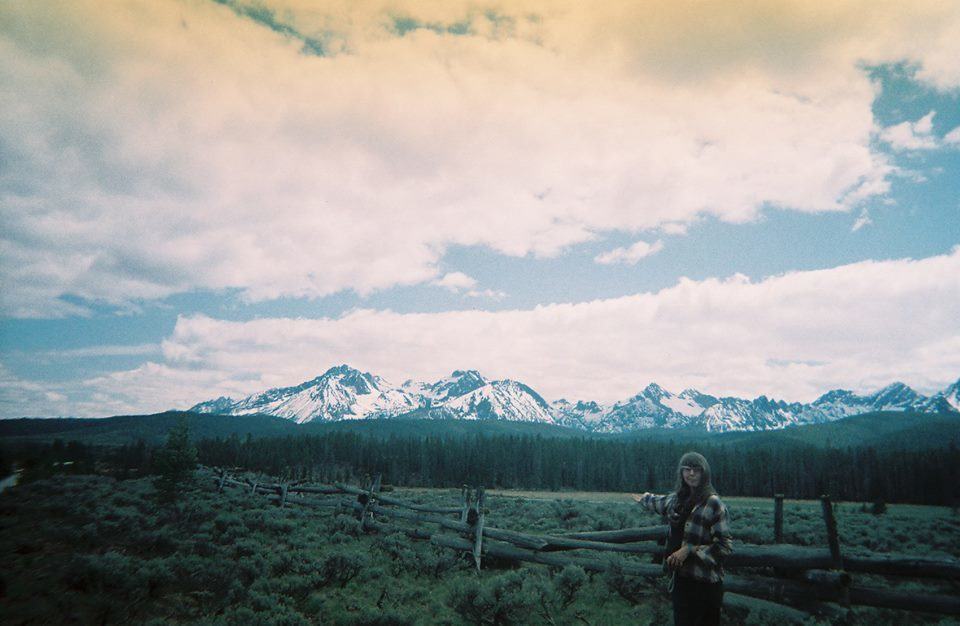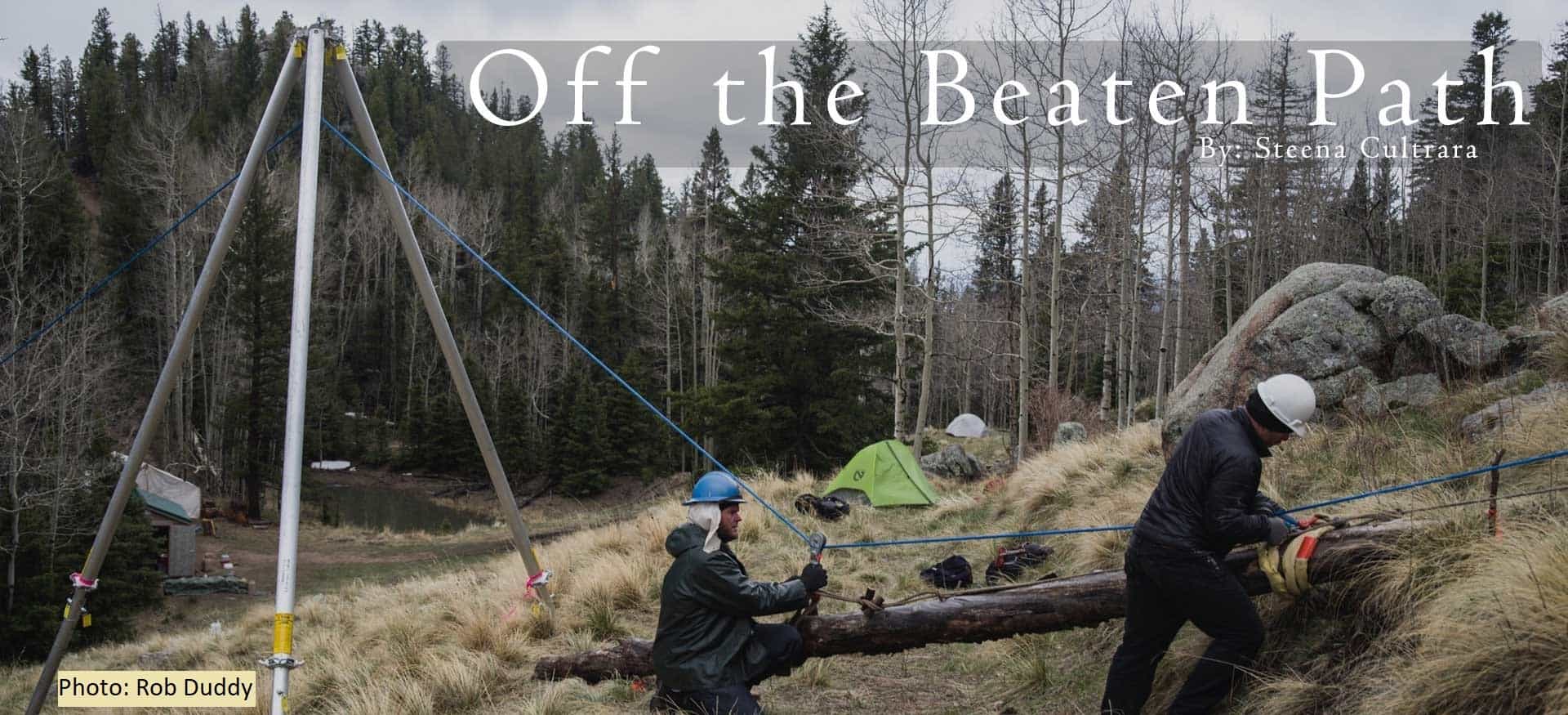
This season the Mount Columbia trail reconstruction crew will utilize a grip hoist and cable rigging system to move building materials (rocks) from the upper slopes of the mountain to our worksite below. As the multi-year project progresses into the second season our crew is moving further into the tundra and farther away from the source materials necessary to construct staircases and soil retention structures. Before our USFS horse packing team can haul the several hundred pounds of equipment into the backcountry, we needed to be properly trained on how to safely and effectively install, move, and operate the tram system.
The second week of May we ventured to Colorado Springs to meet up with members from the Southwest Conservation Corps (SCC) and Rocky Mountain Field Institute (RMFI), as well as Jed Talbot, Owner of Off the Beaten Path Trailworks, LLC, for a week-long training session. The rigging training was hosted by the National Forest Foundation as part of its new “Find Your Fourteener” campaign – a collaborative effort aimed at increasing the pace and scale of improvements to sustainable recreation on the 14ers.
Wow! What a treat that week was!
We began at the RMFI office and traveled towards Cheyenne Mountain State Park. With torrential Spring storms the days leading up to our trip the roads were wet and slick, but did not stop us to get to our destination. Upon arrival to our humble basecamp we spent the morning using the griphoist to pull our vehicles up the steep and muddy road. Oh, what fun!
Before our hands-on training began we leaned a lot about forces, and understanding the ratings associated with the slings, shackles, griphoist, and other components. Jed, our instructor, made sure the numbers and methods were crunched over and over in our brains. “Double check the safety, communicate, and let it roll…”
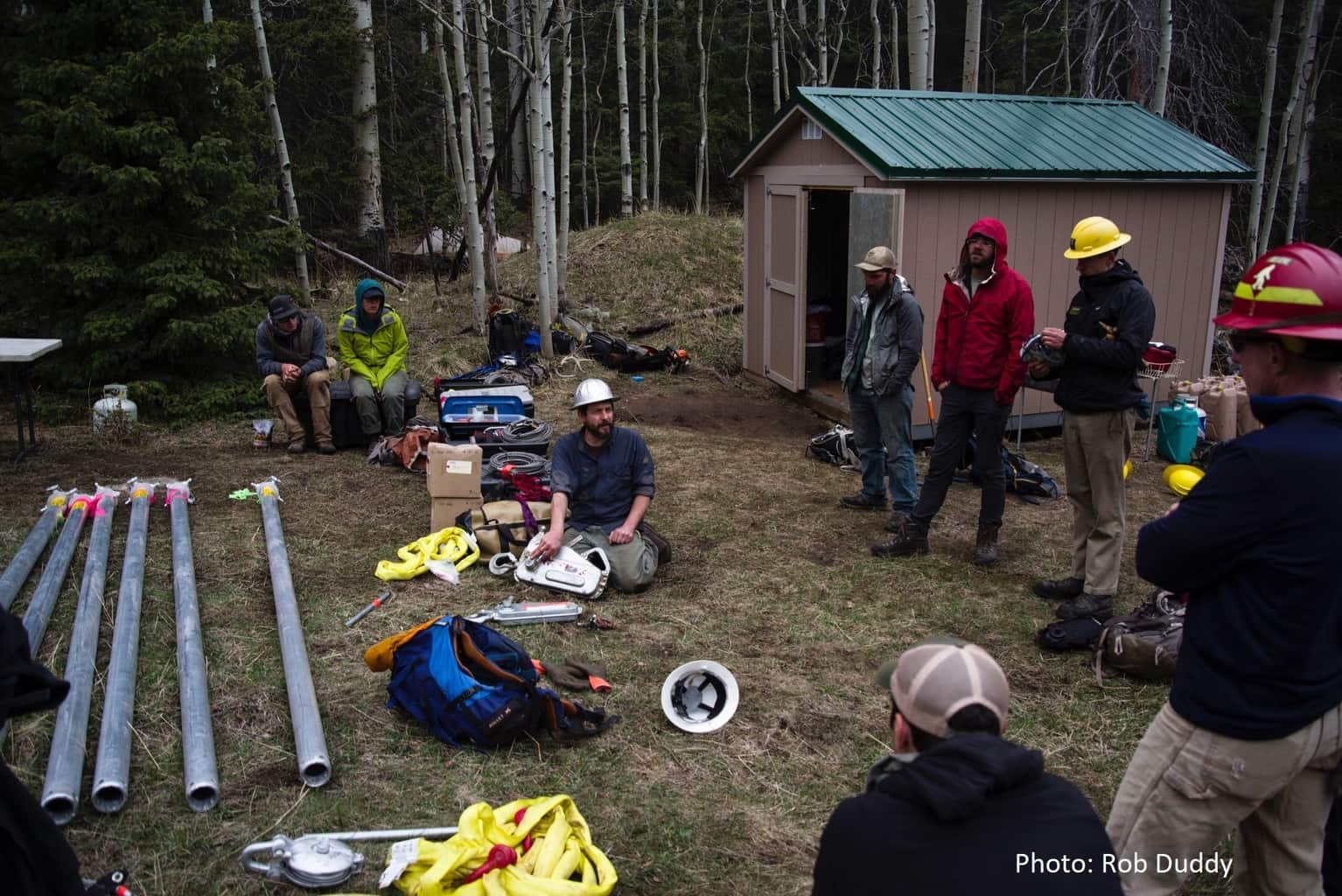
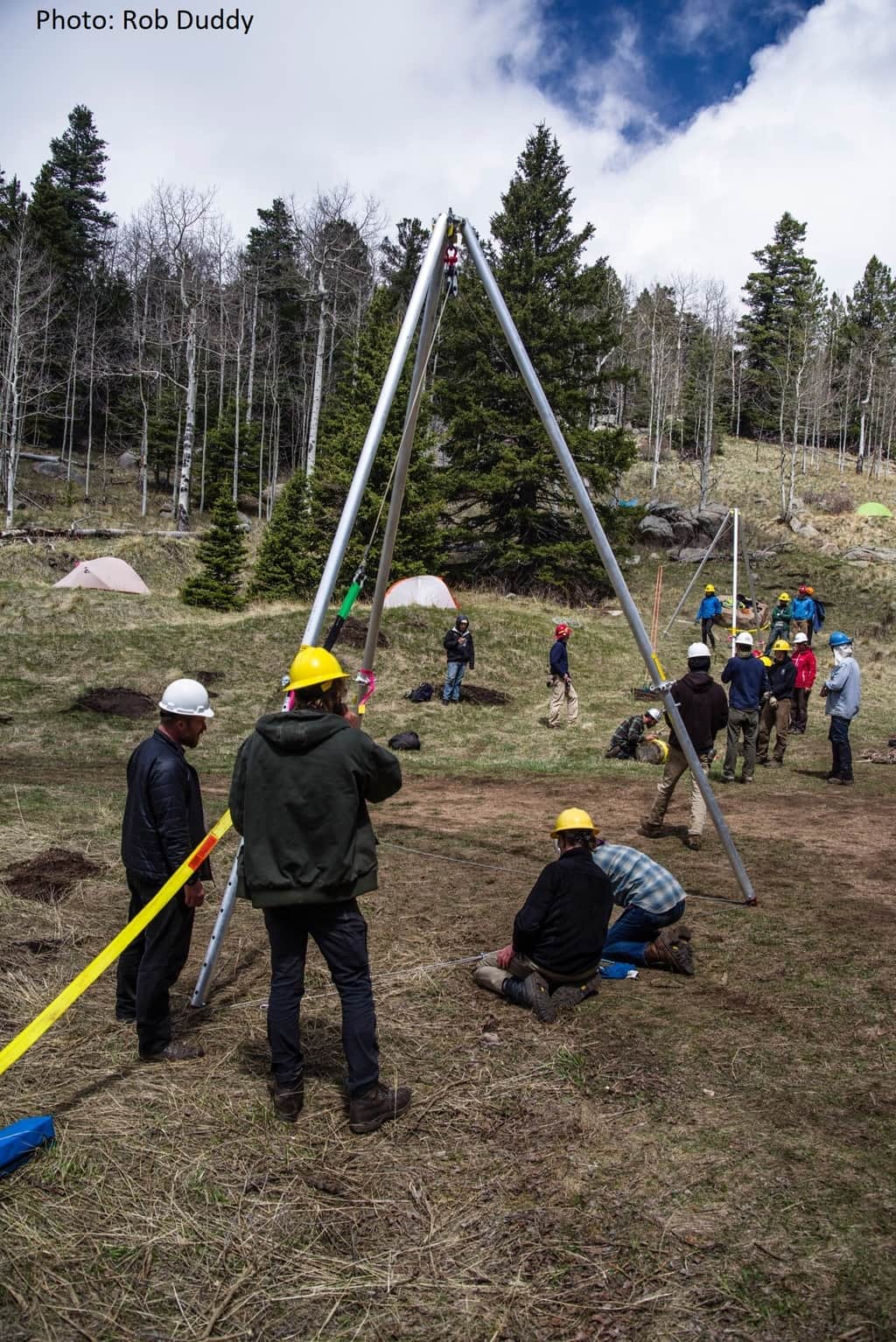
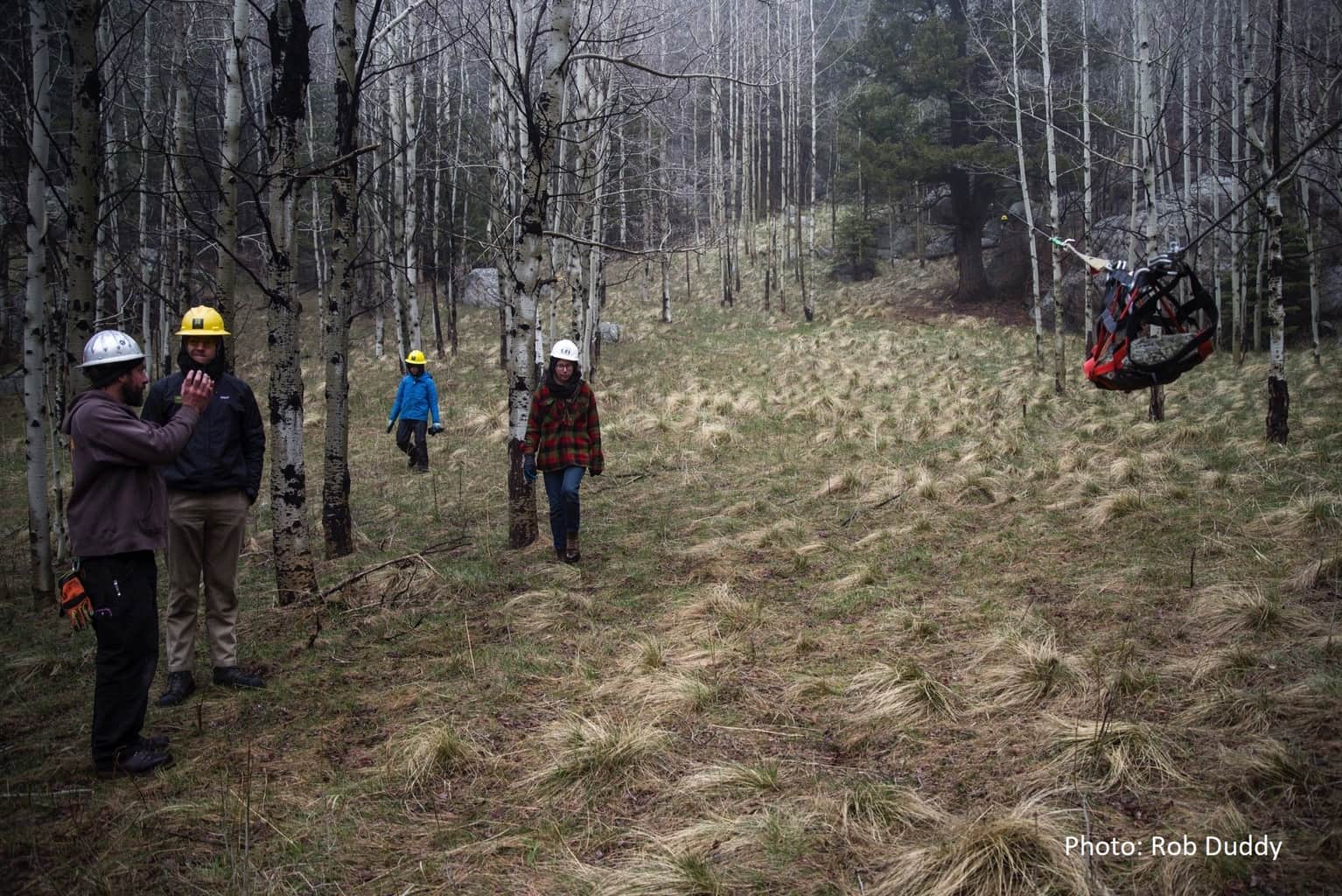
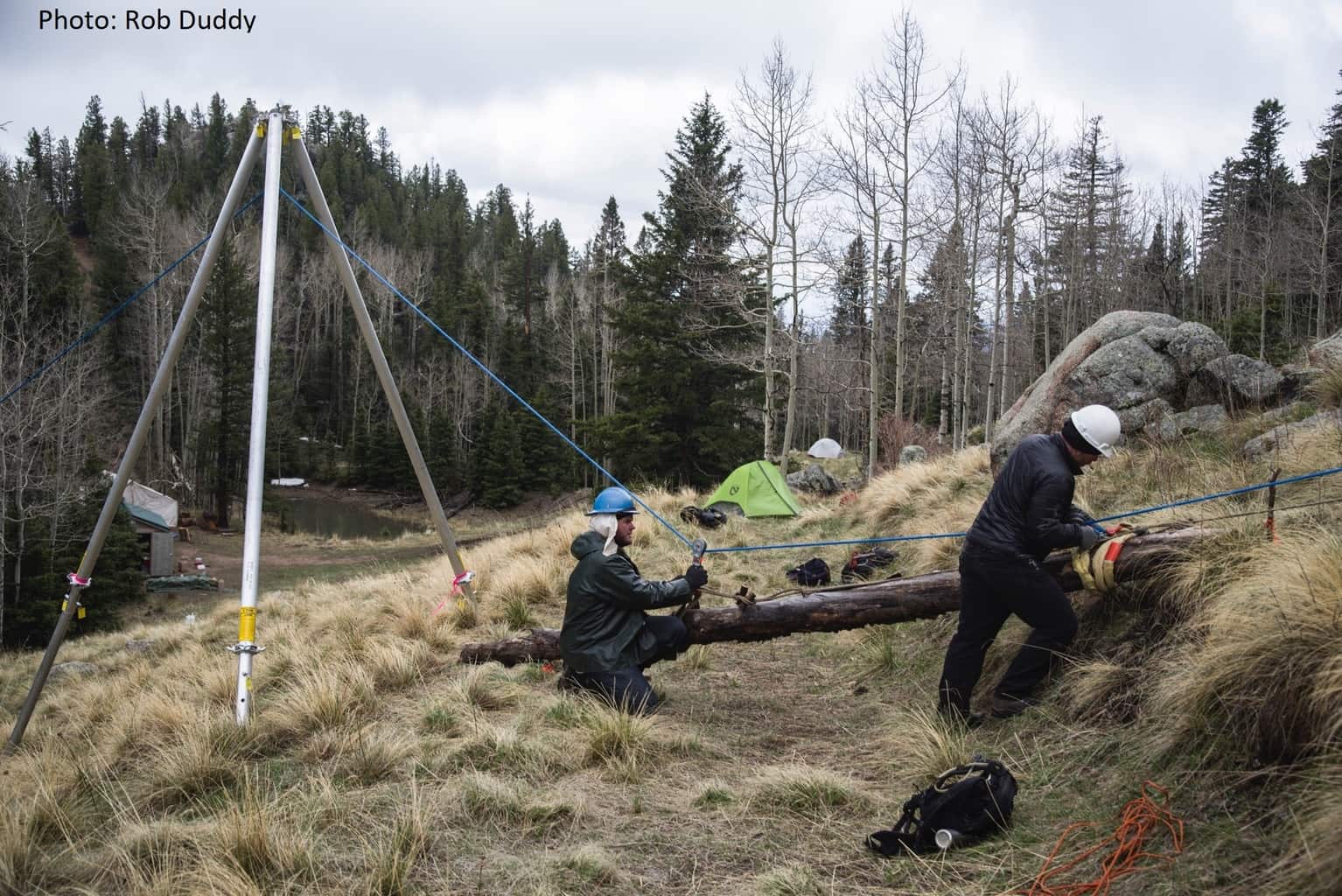
We set up a couple of stations where we familiarized ourselves on how 2,000 – 4,000 pounds of force feels on the system. The following day we set up an area to try out the tripods we will be using on Mount Columbia this year. Figuring out the correct and safest process to carry loads from point a to point b required the utmost attention to detail and focus. Success ensued as the scenario was completed.
Prior to the training, I had zero experience working with griphoists. The training was extremely informative and eye opening to a whole new world of moving materials on a backcountry trail maintenance project. It was so nice to be together with the Columbia crew (just me and the boys)! The thought process that comes with the griphoist really opened my eyes for different scenarios and ways to move things…
Jed was a pleasure to meet! He is an open and friendly person, passionate about trails, and recognizes all the skills that come with the work. He did a great job reminding us that we are professionals and the importance of sticking together and working together.
I am extremely excited to deploy the griphoist/cable-rigging system on Columbia this season. It will be an extremely helpful addition as we continue to construct the new trail reroute through an area where there is little to no rock source. As griphoist masters and a strong team, we will figure it out.
A huge thank you goes out to the National Forest Foundation and Southwest Airlines for funding the collaborative training session. CFI would also like to thank The Golden Civic Foundation for the two grants that have allowed us to purchase the tripod and griphoist equipment.

